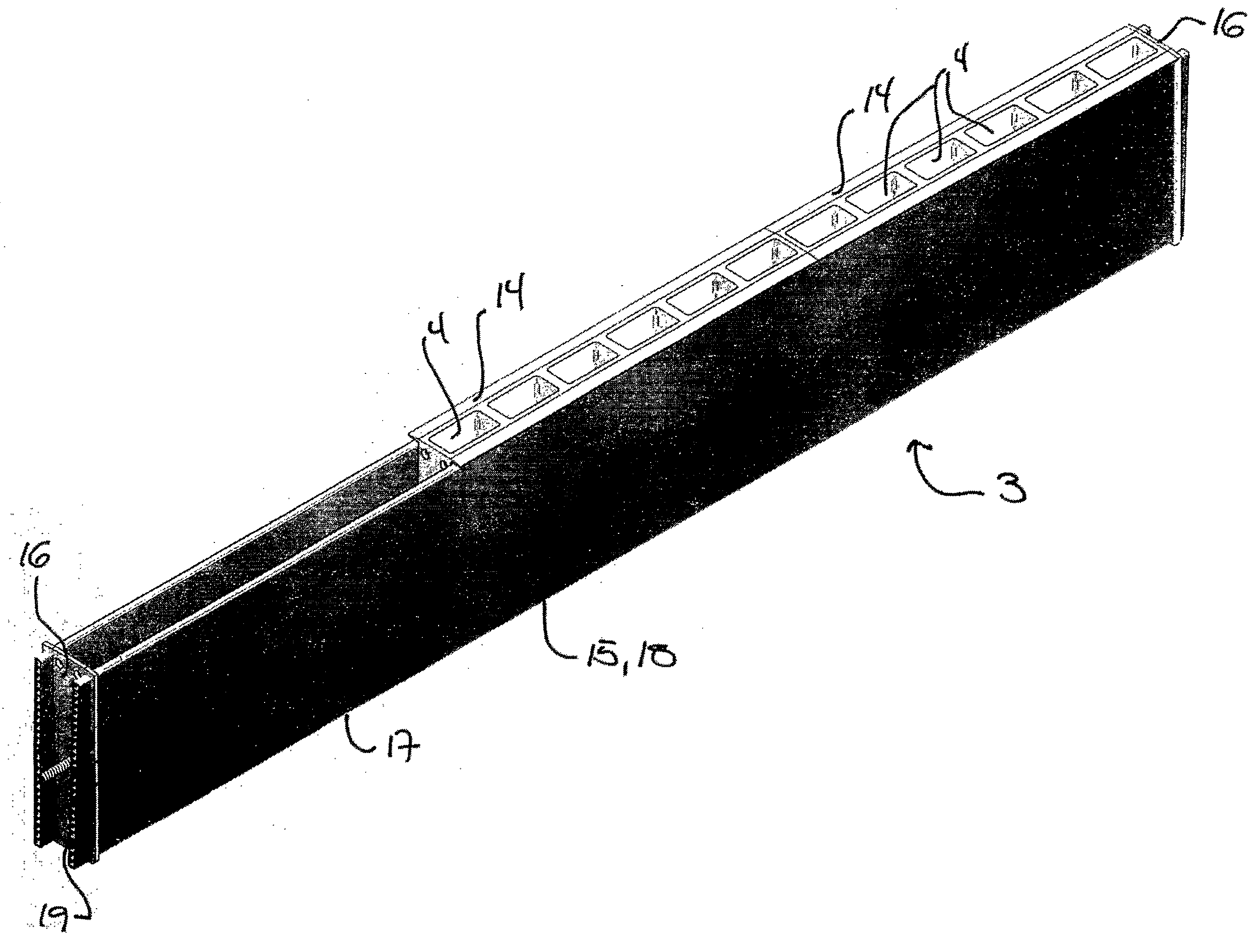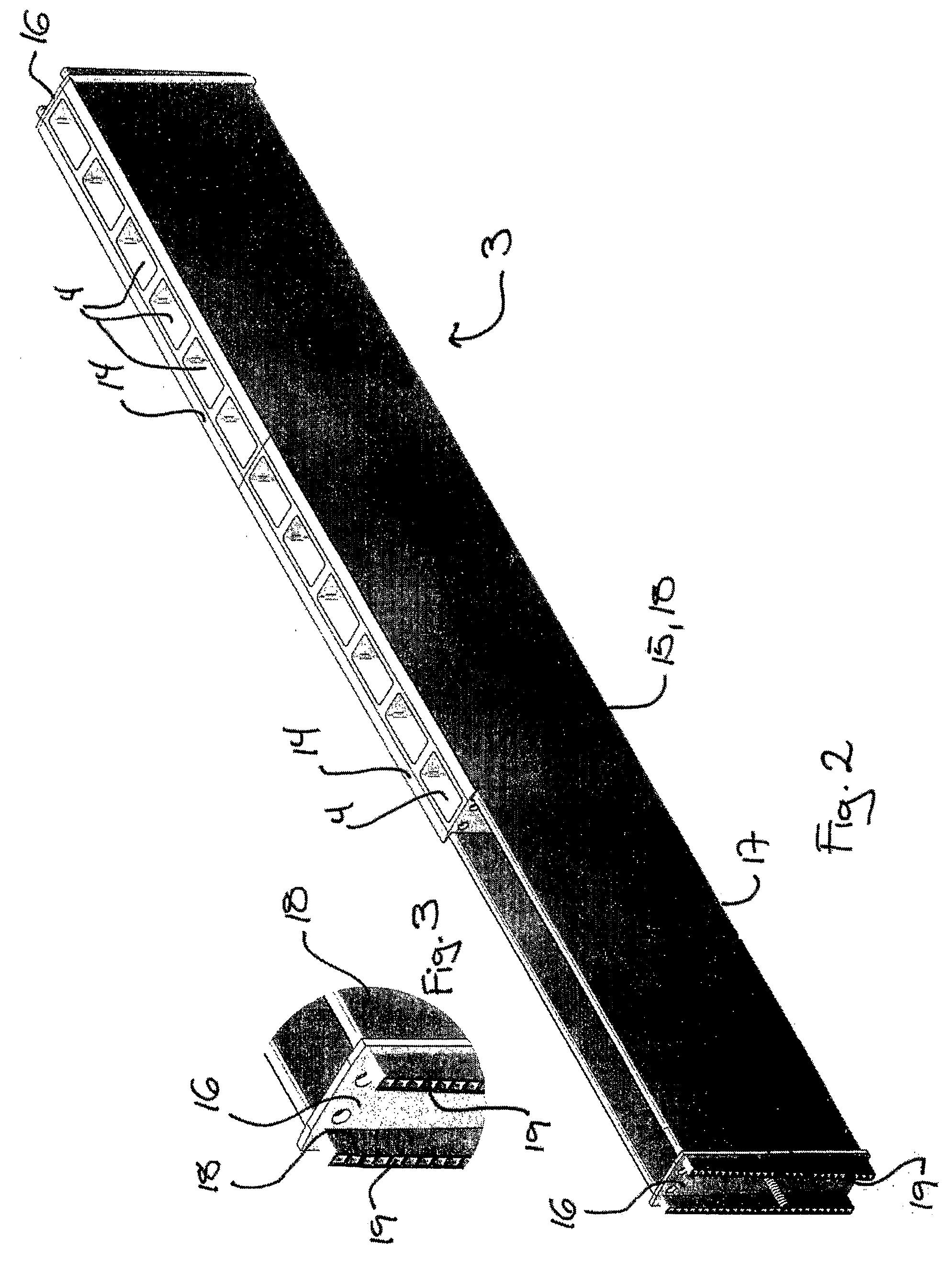Freezer segment for a freezer for confectionary with segments including channels for direct evaporation of CO.sub.2
a technology of co.sub.2 and freezer, which is applied in the field of freezer segments, can solve the problems of ices becoming sour and inedible, neither desirable nor possible to use primary cooling directly, and too great risk of leaking from freezing equipmen
- Summary
- Abstract
- Description
- Claims
- Application Information
AI Technical Summary
Benefits of technology
Problems solved by technology
Method used
Image
Examples
Embodiment Construction
[0008]As mentioned in the introduction, the present invention concerns a freezer segment for a freezer of the type used in making confectionery, including e.g. edible ice with stick, where the confectionery is cast in moulds which are cooled for freezing after filling and after sufficient freezing applied heat or subjected to shock cooling for a short period so that removal from the mould can take place. Cooling of the moulds is effected in a freezer segment by using direct evaporation of CO2.
[0009]Generally, the invention concerns elements for use in connection with cooling and freezing of many different kinds of confectionery. In the following, the terms edible ice and ice are primarily used instead of confectionery. But in the actual text, the various terms are to be considered as confectionery in general.
[0010]Several advantages are achieved by a freezer segment according to the invention where confectionery is frozen by direct evaporation of CO2. One of the most important advan...
PUM
 Login to View More
Login to View More Abstract
Description
Claims
Application Information
 Login to View More
Login to View More - R&D
- Intellectual Property
- Life Sciences
- Materials
- Tech Scout
- Unparalleled Data Quality
- Higher Quality Content
- 60% Fewer Hallucinations
Browse by: Latest US Patents, China's latest patents, Technical Efficacy Thesaurus, Application Domain, Technology Topic, Popular Technical Reports.
© 2025 PatSnap. All rights reserved.Legal|Privacy policy|Modern Slavery Act Transparency Statement|Sitemap|About US| Contact US: help@patsnap.com



